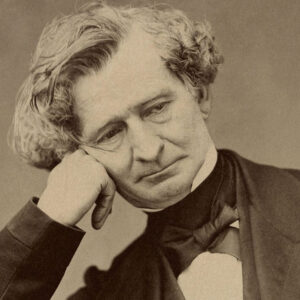Daughter of the Regiment 101: Program Notes

Daughter of the Regiment tells the story of a young woman raised by the Twenty-first French Regiment. When she falls in love with an outsider, new surprises reveal themselves. Learn more about the history, music, and critical reception of Donizetti’s opéra-comique.
The Opera in Context

Tonio and Marie are in love. His colleagues approve; her aunt does not. Never fear! All obstacles shall be resolved in the sweethearts’ favor with much marvelous music along the way. What more could one ask of opera? Some might suggest high drama and tragedy. However, Gaetano Donizetti (1797–1848) had already done plenty of that, most famously with Lucia di Lammermoor (1835). Now, in 1840, the Italian-born composer was based in Paris. Taking a cue from French audience tastes, and perhaps also from his own inclinations, he seized an opportunity for operatic good cheer. Welcome La fille du Regiment (Daughter of the Regiment)!
The work premiered February 11, 1840, at the Paris Opéra-Comique. Indeed, Daughter is quite comical. However, in Paris at the time, the genre known as “opéra-comique” was specifically a stage drama that combines vocal musical selections having orchestral support with spoken dialog. Before long, Parisians would be calling such works “operettas,” though that would be in relation to Jacques Offenbach (1819 – 1880). In Donizetti’s time, they were still “opéras-comique.” If there’s spoken dialog, does it still suit an opera house? Whyever not? Even Mozart composed a few stage works having spoken dialog. Provided the music is first rate, spoken words ought not be a handicap to acceptance.
What is Bel Canto Anyway?
Donizetti’s creation is indeed first rate: an admirable example of bel canto style. Literally, that’s “beautiful singing,” though surely all operas have that. Bel canto goes one step further: not just beautiful, but also at times elaborately flamboyant with a great many notes—even quite high ones—to increase the effect. Donizetti provided effervescent examples of the style for both lovers, sometimes including chorus commentary for emphasis. If the gentlemen of the chorus are actively cheering what the soloist has to say, the audience may be hard-pressed to hold back!
Set Sail for the High C’s
Both Tonio and Marie have spacious bel canto spotlights demanding artistry as well as stamina. Tender, reflective passages alternate with brilliant vocal fireworks: increasingly more of the latter as the scene continues. Leading man Tonio’s act one aria “Ah! mes amis, quel jour de fête!… Pour mon âme” (Ah, my friends! Such a festive day! … For my soul) is one of the most notoriously challenging arias in the tenor universe. Its buoyantly flowing phrases are punctuated by nine (yes, nine!) high C’s, the entire aria closing on one final high C held for as long as the tenor can manage. Uproarious applause generally follows!
As for Marie, her act two aria begins with her lamenting a future that seems confined to acceptable feminine behavior, rather than the excitement she has enjoyed with the regiment. Prominent cello lines underscore her sighs. Ah, but then drums and brass announce the approach of the Regiment—her beloved foster fathers! The second half of the scene, “Oh! transport! oh! douce ivresse … Salute a France” (Oh, bliss! Oh, sweet ecstasy!… Glory to France!), inhabits a new and brilliantly lit world. A rush of shimmering trills and roulades express her joy, leading ultimately to a long high trill even higher in effect than Tonio’s.
Berlioz Has a Bone to Pick

Daughter was well-received in Paris, at least by the audience, though the most influential of all Parisian music critics had a different opinion. That gentleman was Hector Berlioz (1803 – 1869). Not merely a journalist, Berlioz was also a respected composer who was likely envious of Donizetti’s triumphs in Paris. When an Italian composer’s operas are reaching the public and a Frenchman’s are not, one can suppose that Berlioz’s review might have been tinged with jealousy.
Words and Music Come Together
In the text, librettists Jules-Henri Vernow de Saint-Georges and Jean François Bayard neatly differentiate the characters’ personalities. Donizetti’s music provides extra levels both of subtlety and energy, giving singers and directors much to work with as the characters and the story come to life.
Daughter is not just music layered over a story, or a story loosely related to music. It is a deft blend of music and storytelling. The presence of a happy ending doesn’t diminish the craftsmanship one bit. Tragedy may strike the soul, but Donizetti’s charming romance is a breath of fresh air.
—
Program notes by Betsy Schwarm, author of the Classical Music Insights series.


